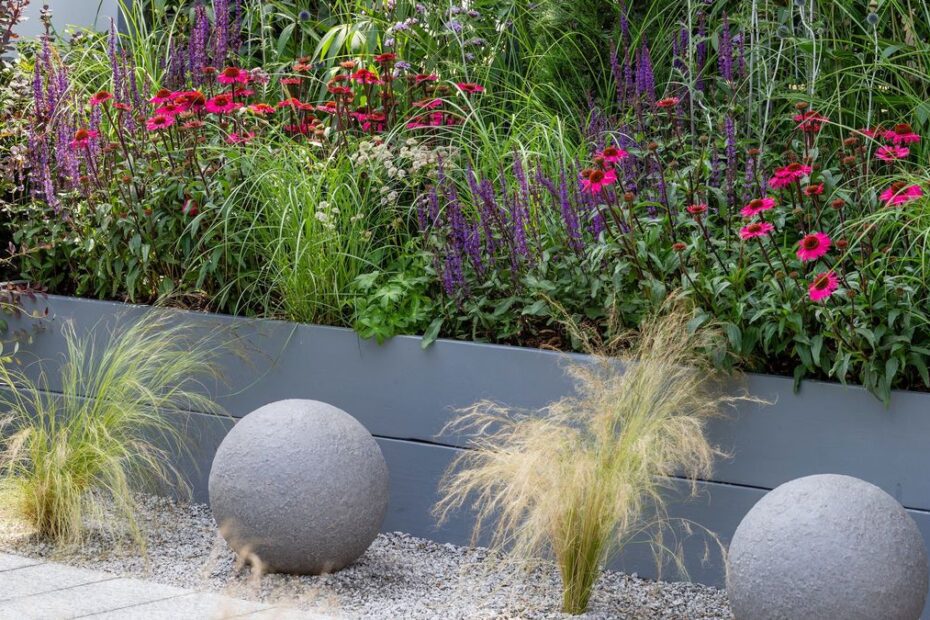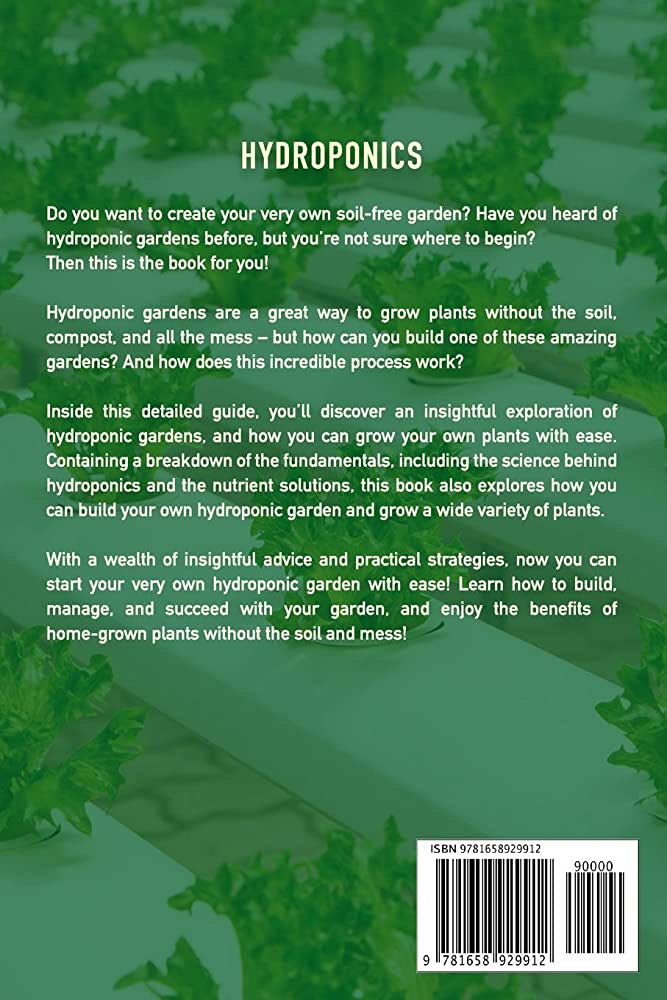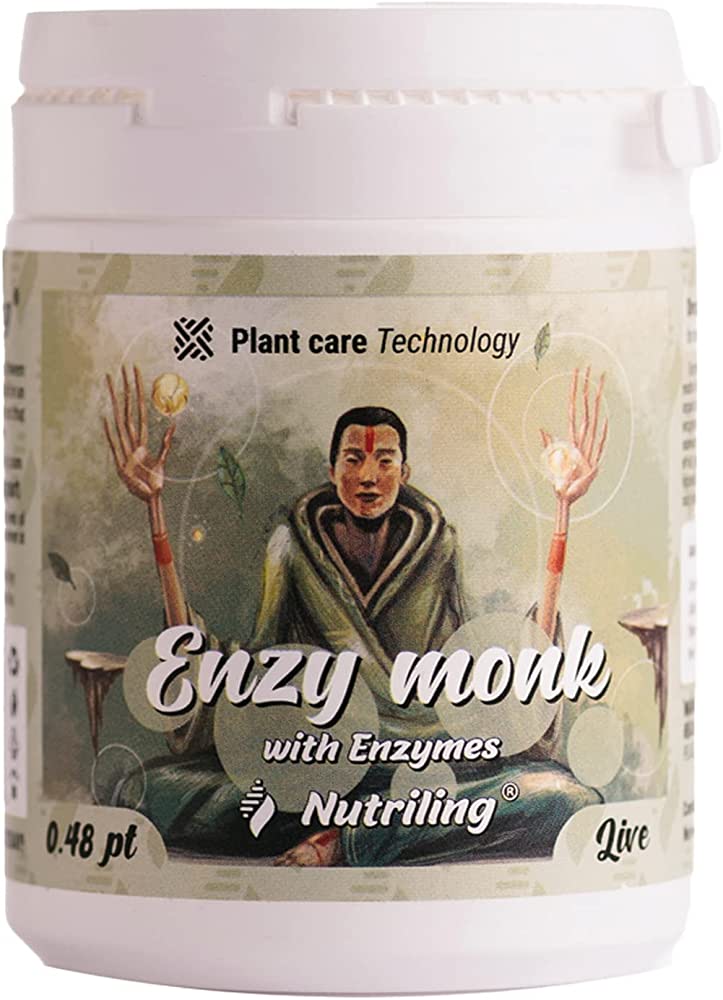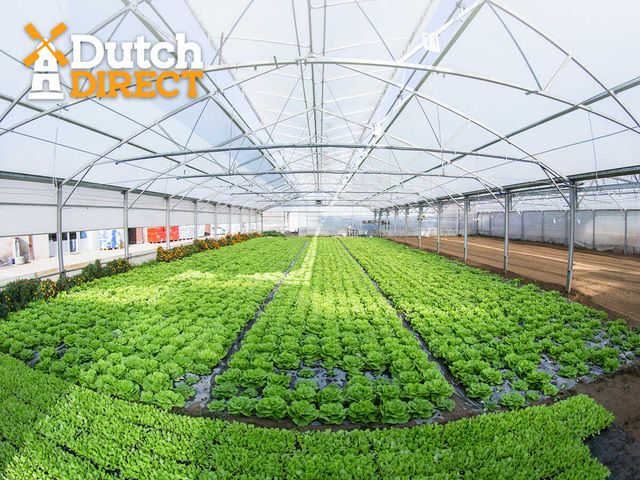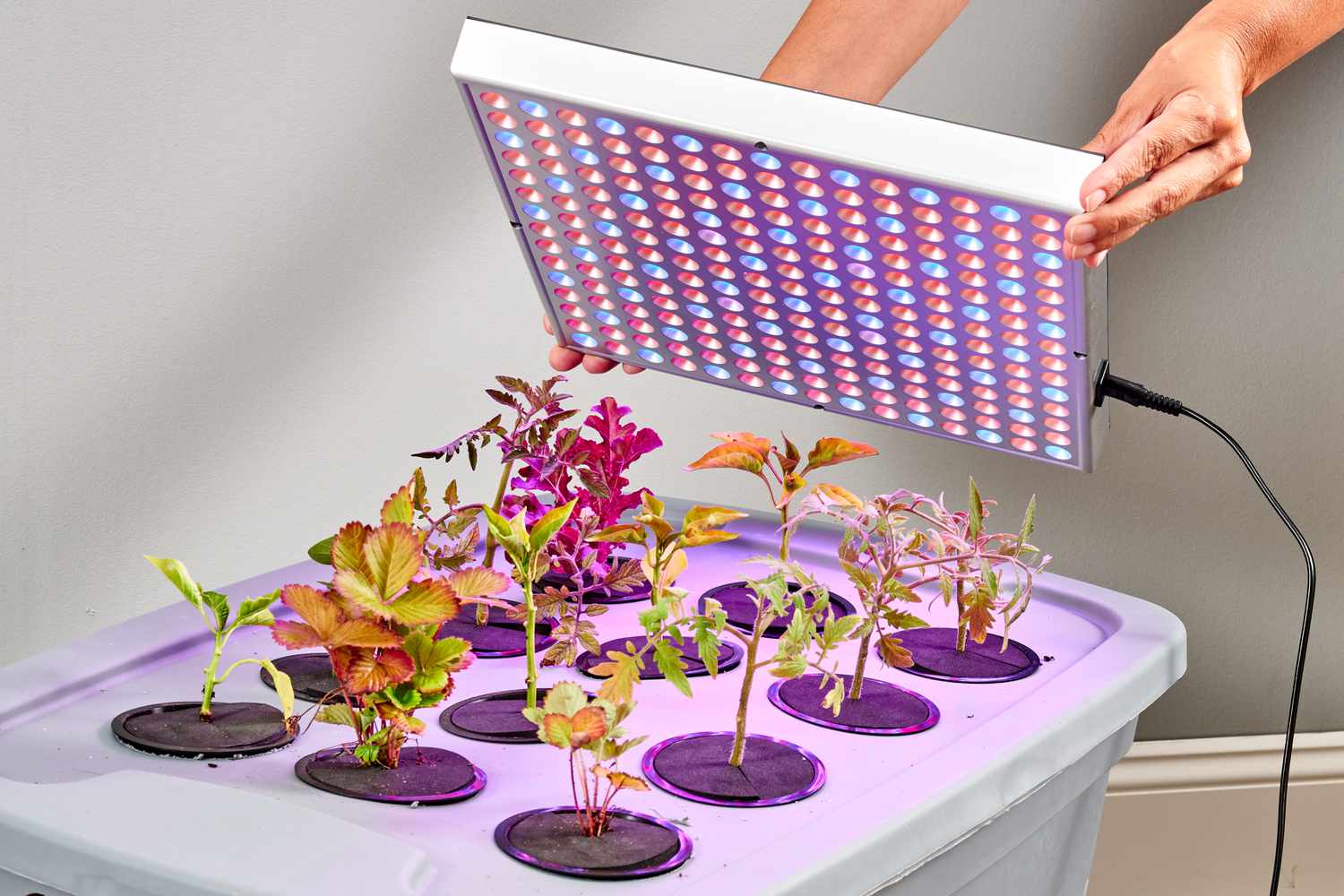Hydroponic plants can be used for ornamental and decorative purposes. To achieve this, plants are grown in nutrient-rich water with no soil.
Hydroponic plants have revolutionized ornamental and decorative gardening. Unlike traditional gardening that is soil-based, hydroponic gardening entails growing plants in nutrient-rich water. As such, these plants grow faster, bigger, and stronger and require fewer pesticides, herbicides, and fungicides, making them eco-friendly and healthier for human consumption.
Hydroponic plants are grown indoors, so they are not affected by climate change, pests, and disease instances that affect outdoor plants. Additionally, these plants come in a variety of colors, shapes, and scents that add beauty and ambiance to spaces like homes, offices, and shops. Overall, hydroponic plants offer a unique, low-cost, and sustainable solution to ornamental and decorative gardening.
:max_bytes(150000):strip_icc()/160513939_486248869222210_8761458389200031745_n-29b0ff3150fb486eb62895de197ddf05.jpg)
Credit: www.thespruce.com
Popular Hydroponic Plants For Decoration
Hydroponic Plants For Ornamental And Decorative Purposes
Hydroponic plants have been gaining popularity as a new way of gardening where plants grow without soil by using nutrient-rich water. Apart from providing fresh produce, hydroponic plants also make great decorative pieces for indoor spaces. Hydroponics offers the opportunity to garden all year round, with less time, space, and effort.
Let’s explore the popular hydroponic plants perfect for decoration.
List Out The Most Popular Hydroponic Plants Suitable For Ornamental And Decorative Purposes
Here are the most popular hydroponic plants that can be grown for ornamental and decorative purposes:
- Pothos: Pothos is a beautiful trailing plant, also known as devil’s ivy, with heart-shaped leaves that come in various shades of green. They’re easy to care for and can grow in low to bright-light conditions.
- Philodendron: Philodendron comes in many varieties, including the trailing type. This plant boasts large, glossy leaves with unique patterns and can grow in low to bright-light conditions.
- Orchids: Orchids are known for their unique, elegant flowers and come in many varieties. They require high humidity and bright but indirect sunlight to thrive.
- Bromeliads: Bromeliads are striking plants recognized for their unique, colourful foliage and spiky flowers. They require minimal care, grow best in bright but indirect light, and can add a tropical touch to any space.
- Spider plant: Spider plants have long, narrow leaves that grow in a rosette pattern and produce small, white flowers. They are very easy to care for and can be grown in a variety of light conditions.
- Air plants: Air plants, or tillandsias, do not require soil and can be grown in a wide range of planters, including terrariums, glass globes, and other unique containers. They are known for their flexibility and ability to grow in a variety of light conditions.
Explain The Features And Characteristics Of Each Plant And How They Can Add To Your Space
- Pothos: Pothos is one of the easiest plants to grow. Its trailing vine-like structure adds a relaxing and calming touch to your space. It’s perfect for high shelves, herb gardens, or as a hanging plant next to a window. The plant is excellent at purifying the air of pollutants.
- Philodendron: Philodendron makes an excellent statement piece, and its lush green colour and glossy leaves can add to any aesthetic. It’s perfect for hanging or trailing down high shelves and purifies the air as well.
- Orchids: Orchids make a beautiful centrepiece in your living room or bedroom. Its unique shapes and colours can add an exotic touch to your space, while its air-purifying qualities make for a healthy atmosphere.
- Bromeliads: Bromeliads add a tropical touch to your indoor garden. They thrive in hot, humid conditions and can thrive in any room in the house. They regulate the humidity in the air, keeping you feeling relaxed.
- Spider plant: Spider plants are fantastic for any space, and their green and white colour combination adds a touch of freshness to any decor. They’re best grown in hanging baskets or mounted on walls and remove pollutants that can cause allergies.
- Air plants: Air plants add uniqueness and creativity to your indoor space. They can grow in almost any container, and their easy-care makes the perfect choice for busy people. They can grow in any location with minimal light and purify the air by neutralizing volatile organic compounds.
Hydroponic plants can add a touch of freshness, brightness, and life to any indoor space. They can also help in purifying the air and can be grown with minimum effort, thus making them a favourite of plant lovers. Try growing these hydroponic plants and see how they can transform your living space into an oasis.
Setting Up A Hydroponic Garden
As hydroponic gardens gain popularity, more and more people want to try their hand at this sustainable and efficient gardening method. If you’re curious about hydroponic gardening, you’ve come to the right place. Here’s everything you need to know about setting up a hydroponic garden.
Equipment And Materials Required For Hydroponic Gardening
Before you begin, make sure you have these essential tools and supplies:
- A hydroponic system, including a tank, pump, tubing, and net pots
- A growing medium, such as rockwool, peat moss, or coco coir
- Nutrient solution
- Ph kit to monitor and adjust ph levels
- Lighting system
- Timer
- Thermometer and hygrometer to monitor temperature and humidity levels
- Fans to circulate air and prevent mold growth
Step-By-Step Guide To Setting Up A Hydroponic Garden
- Choose the location: Find a suitable location for your hydroponic garden. It should be a place where you can easily access and monitor the plants. Make sure the space is well ventilated and has a nearby power source.
- Set up the system: Follow the manufacturer’s instructions to set up your hydroponic system. Make sure to test the system before adding any plants.
- Add the growing medium: Fill the net pots with a growing medium and place them in the designated slots in your hydroponic system.
- Add the nutrient solution: Mix the nutrient solution according to the manufacturer’s instructions, and fill the tank with the solution.
- Adjust ph levels: Use a ph kit to monitor and adjust the ph levels of the nutrient solution.
- Install the lighting system: Install the lighting system according to the manufacturer’s instructions. Place the lights above the plants and set a timer to provide 16-18 hours of light per day.
- Monitor temperature and humidity: Use a thermometer and hygrometer to monitor temperature and humidity levels. Keep the temperature between 65-75°f and humidity between 50-70%.
- Maintain the system: Keep an eye on the nutrient levels and adjust as necessary. Remove any dead or diseased plants to prevent mold growth.
Key Considerations When Setting Up A Hydroponic Garden
- Light: Make sure your plants receive enough light. Use grow lights if necessary.
- Temperature and humidity: Monitor temperature and humidity levels to prevent mold growth and ensure optimal plant growth.
- Nutrient balance: Keep a close eye on the nutrient solution and adjust as necessary to maintain a healthy balance.
- Pests and diseases: Prevent pests and diseases by keeping the system clean and removing any infected plants.
By following these steps and considerations, you can set up and maintain a hydroponic garden that produces healthy, vibrant plants and a beautiful display in your home or office.
Benefits Of Hydroponics For Ornamental And Decorative Purposes
Hydroponic gardening is a method of growing plants without soil, using nutrient-rich water instead. Hydroponic plants are perfect for ornamental and decorative purposes as they not only look amazing but also offer several benefits. In this section, we will discuss the advantages of using hydroponic plants for ornamental and decorative purposes.
Environmental Advantages Of Hydroponic Gardening
Hydroponic gardening has several environmental advantages when compared to soil-based gardening. Some of these benefits are:
- Reduced use of water: Hydroponic gardening requires only 10% of the water used in traditional soil-based gardening. The water used in hydroponic gardening is recycled and reused, making it a sustainable option.
- No use of pesticides: Hydroponic gardening does not require the use of pesticides or herbicides, making it an eco-friendly option. This means that hydroponic plants are safe for the environment and for human consumption.
- Increased oxygenation: Hydroponic plants grow faster and healthier as the roots are exposed to a constant supply of oxygen-rich water. This also helps in reducing the risk of root diseases and rot.
Impact Of Hydroponic Gardening On Air Conditioning And Air Filtration
Hydroponic gardening can also have a positive impact on air conditioning and air filtration systems. Some of the ways hydroponic gardening can help are:
- Improved air quality: Hydroponic plants are natural air purifiers, removing harmful toxins and pollutants from the air. This makes them ideal for indoor spaces such as homes and offices, where the air quality can be poor.
- Reduced energy consumption: Hydroponic plants can help in reducing the energy consumption of air conditioning systems. This is because they release moisture into the air, which can help in humidifying the room and reducing the need for air conditioning.
- Aesthetic appeal: Hydroponic plants can be used to enhance the aesthetic appeal of any indoor space. They come in a variety of shapes, sizes and colours, making them perfect for any decorative purpose.
Hydroponic gardening offers several benefits for ornamental and decorative purposes. It is an eco-friendly and sustainable option that can help in improving air quality and reducing energy consumption. With the right care and maintenance, hydroponic plants can add a touch of greenery to any indoor space!
Designing Your Hydroponic Garden
Hydroponic gardening has become increasingly popular over the years, not just for growing food but also for ornamental and decorative purposes. While traditional gardening demands outdoor space and soil, hydroponic gardening allows you to grow plants indoors without soil. It is an efficient and sustainable way to decorate your living space.
In this blog post, we will focus on designing your hydroponic garden and showcasing hydroponic plants in an aesthetically pleasing manner. We will also highlight creative ways to incorporate hydroponic plants into indoor living spaces, and mention how to choose the right plants for your hydroponic garden.
Breakdown How To Plan The Aesthetic Layout Of A Hydroponic Garden
Planning the layout of your hydroponic garden can be as simple as deciding where to place a few plants in your living room or as complex as creating a full-fledged garden with a variety of plants. Here are a few tips to help you plan an aesthetically pleasing hydroponic garden:
- Choose a space: Hydroponic gardens can be as small or as large as you want them to be. Choose the space that works best for you, whether it is a windowsill, balcony, or an entire room.
- Decide on the design: Determine what design, theme, or idea you want to implement for your garden. Decide whether your garden should have a minimalist approach or incorporate different colors and styles.
- Choose containers: Hydroponic plants are grown in containers. Choose containers that suit your aesthetic preference, whether it is a glass vase or a metallic planter. Aim for uniformity in size, shape, or color if that is what you prefer.
Explain How To Showcase Hydroponic Plants In A Visually Pleasing Manner
Once you have planned the layout for your hydroponic garden, the next step is to showcase your plants in a visually pleasing manner. Here are some ways to do it:
- Play with height: Vary the height of your plants. Use tall, medium, and small sized plants to create a dynamic garden.
- Choose the right lighting: Choose natural or led lighting to provide balanced lighting for your plants.
- Decorate with rocks and other items: Incorporate rocks, pebbles, or shells in your container to add texture and interest to your garden.
- Use colorful plants: Choose plants that have bold colors to add vibrancy to your garden.
Highlight Creative Ways To Incorporate Hydroponic Plants In Indoor Living Spaces
Your hydroponic garden is not limited to traditional plant pots. Here are a few creative ways to incorporate hydroponic plants into your indoor living spaces:
- Vertical gardens: Utilize vertical space by using hanging pots, wall-mounted planters, or making a green wall.
- Terrariums: Display your hydroponic plants in a glass terrarium for a unique, visually pleasing aesthetic that can be featured on a coffee table or bookshelf.
- Aquaponic systems: Grow your hydroponic plants alongside aquatic life for an eco-friendly and sustainable feature in your living space.
Mention How To Choose The Right Hydroponic Plants For Your Space
Choosing the right hydroponic plants for your space is crucial to a successful hydroponic garden. Make sure to research the plants you want to grow and consider factors like weather, light, and humidity. Here are some plants to consider for your hydroponic garden:
- Herbs: Hydroponic herbs like mint, basil, and parsley are easy to grow and maintain.
- Leafy greens: Spinach, kale, and lettuce are great options for a small hydroponic garden.
- Flowers: Orchids and violets can add a lovely fragrance to your indoor space.
With these tips, you can create an aesthetically pleasing hydroponic garden that stands out in any living space. By choosing the right plants and containers, you can take your decorating skills to the next level, all while providing clean air to your home.
Frequently Asked Questions On Hydroponic Plants For Ornamental And Decorative Purposes
What Are Hydroponic Plants?
Hydroponic plants are grown without soil, in nutrient-enriched water, and can produce an abundance of healthy foliage.
Why Are Hydroponic Plants Good For Ornamental And Decorative Purposes?
Hydroponic plants are great for indoor spaces, where there is less sunlight, providing easy-care greenery to brighten up any room.
Which Plants Are Commonly Grown Hydroponically For Ornamental Purposes?
Common hydroponic plants for ornamental purposes are peace lilies, english ivy, ficus, and boston ferns.
How Do You Care For Hydroponic Plants?
Hydroponic plant roots thrive in an oxygenated and nutrient-rich environment, so regular cleaning and maintenance is important.
Are Hydroponic Plants More Expensive Than Traditional Plants?
Hydroponic plants are often more expensive than traditional plants, but their easy maintenance and longevity make them a worthwhile investment.
Can Hydroponic Plants Be Grown In Small Spaces?
Hydroponic plants are ideal for small spaces, condos, or apartments, as they take up less room and are easier to care for.
Conclusion
Hydroponic plants are an excellent choice for those who want to add a touch of uniqueness to their living or working space. Not only are they visually appealing, but they also provide numerous health benefits and require very little maintenance.
Whether you want to grow ornamental or decorative plants, hydroponics provides an alternative growing system that can work for you, regardless of the size of your space or the type of plants you choose. By using hydroponics, you can enjoy the benefits of plants without having to worry about soil, pests, or pesticides.
Moreover, it allows for better control of the environment and increased efficiency in plant growth. In the end, hydroponics is a sustainable and innovative way of gardening that can brighten up your living space and bring a sense of satisfaction and accomplishment.
So, what are you waiting for? Start your own hydroponic garden today and transform your space in a unique and green way.
